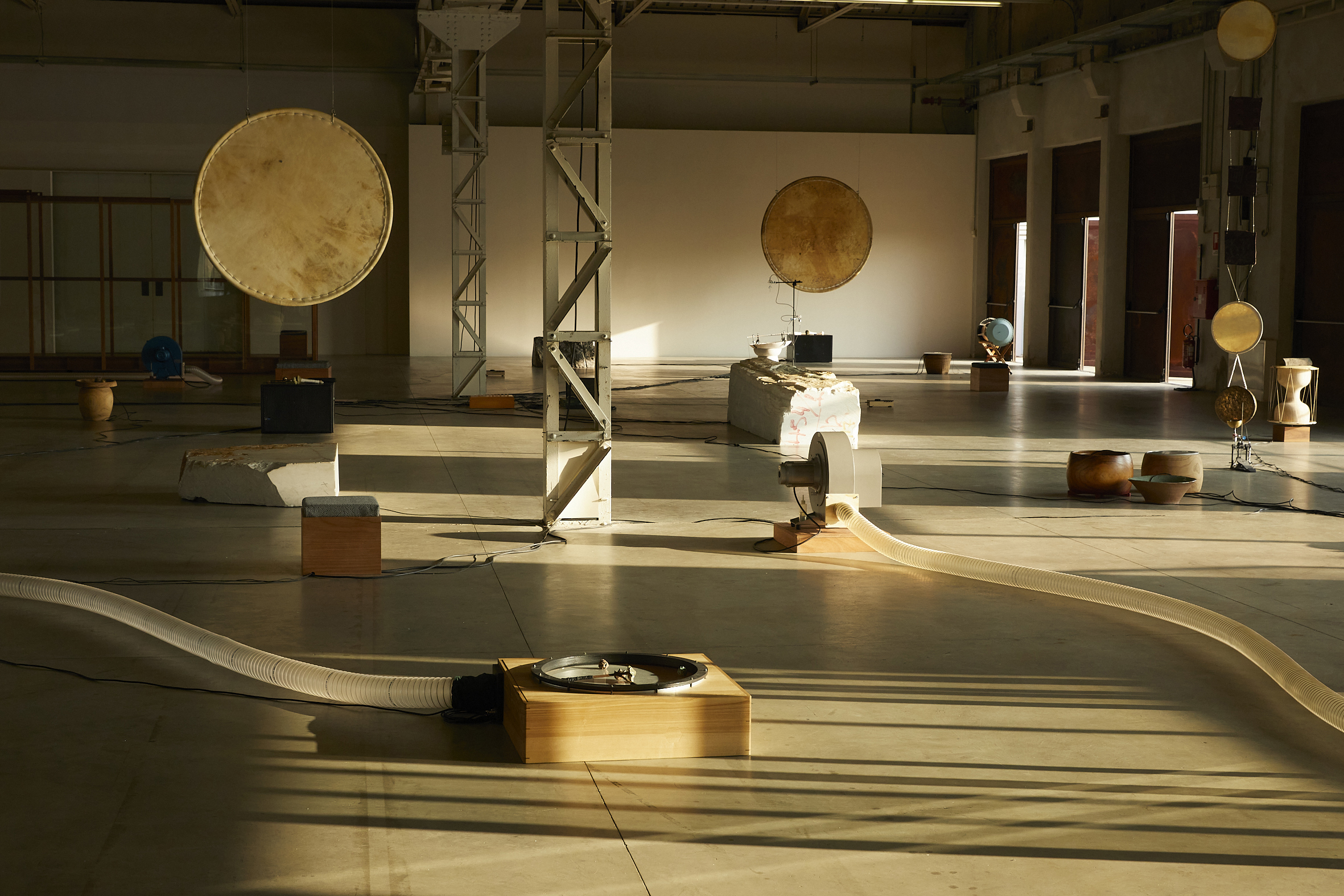article
Maurizio Cattelan’s 'Sussurro': Smirking in the Haunted House
I have been a fan of amusement parks for as long as I can remember. As a kid, I often traveled to Paris for family reasons, and I was lucky enough to visit Disneyland Paris many times. Amongst all the attractions, my top choice was always the Phantom Manor, a haunted house with (fake) ghosts and optical illusions that distorted reality, or at least the one of an imaginative kid.
It was strange, and almost amusing, to feel something similar while visiting Sussurro (Whisper), Maurizio Cattelan’s exhibition at Casa de Serralves. After many years, I experienced visiting a sort of haunted house, this time not inhabited by ghosts, but by history, personal and collective traumas, and above all, by the provocative presence of the artist himself. The artist is indeed interested not only in world story and its wounds, but also in our individual ones, our transitions, and those intimate fears that shape who we are. The exhibition unfolds truly like a whisper: like a ghost, or perhaps many, following us closely. Each work is conceived to provoke a reaction, sometimes tragicomic, but never indifferent. Cattelan feels like a mischievous child, playing tricks, pushing us to confront our fears with a smirk.
In Untitled (2003), we see an adolescent drumming loudly, trapped in a mechanical loop, like a monstrous carillon. It’s a hypnotic, unsettling image that speaks of resistance, yet also stagnation. Another piece, Charlie Don’t Surf (1997), shows a boy nailed to a school desk, staring blankly out the window toward the museum’s garden. It's an image of adolescence as forced conformity, a kind of universal submission. Again, Cattelan’s adolescent spirit emerges: defiant, ironic, and yet deeply human.
Wandering through the house, we encounter figures that want to hide, like an ostrich with its head in the sand. Untitled (1997), created for the Fatto in Italia (1998) exhibition (an attempt to present an overview of contemporary and emerging Italian artists at the time), it is a clear metaphor for humankind’s tendency to avoid reality, to refuse confrontation. Another hiding figure is the frightened elephant upstairs, in Not Afraid of Love (2000): a literal "elephant in the room," cowering, shoved under the rug, both absurd and painfully relatable.
Suspended in the middle of the entrance, in between the two floors, is one of my all-time favorite works by Cattelan: Novecento (1997), a taxidermied horse hanging from the ceiling, limp and helpless. As someone who grew up in Florence, I was surrounded by equestrian statues, symbols of power, glory, and command. This horse, however, is the opposite: passive, vulnerable, almost ridiculous. It becomes a parody of heroism, a powerful commentary on the failure of the 20th century, a century of broken promises and vanished illusions. In this and other works, we clearly see the contrast between Cattelan and contemporary Damien Hirst. While the British artist employs taxidermy in a philosophical, sacred manner, Cattelan undermines and subverts it: taxidermy becomes a provocative, ironic tool, behaving like a naughty sprite. I think it’s no coincidence that one of his iconic taxidermy works is titled Ghosts (2011), a series of stuffed pigeons placed up high, silently watching the visitors. It’s another example of Cattelan’s desire to invert perception: we’re not looking at the works; they are looking at us. Like entering a haunted house where the residents are already watching, just waiting for your reaction. In Bidibidobidiboo (1996), we encounter something even more bizarre and intimate: a miniature domestic setting, where a squirrel appears to have committed suicide. We’re not even sure if it was really self-inflicted. The fairy tale is broken, the spell is over: Cinderella’s kitchen, post-disillusionment.
But it's not just taxidermied animals that haunt the house. There are also doubles of Cattelan himself: hanging doubles (You, 2022), with flowers in hand (is it a funeral or a celebration?) suspended between identities. Doubles sharing a bed (We, 2010), or miniature clones like Mini Me (1999). Each one questions the autonomy of the artist, blurring lines between presence and absence, between sincerity and self-mockery.
The Casa de Serralves, with its Art Deco style and aristocratic past, sold in the 1950s due to the former owners’ financial decline and Portugal’s shifting political climate, became the perfect contemporary haunted house: inhabited not by ghosts of the past, but by the reflections and anxieties of our own time.
The exhibition Sussurro is on view until January 11, 2026.
BIOGRAPHY
Orsola Vannocci Bonsi is a cultural producer and advisor who has called Lisbon home for eight years. Through her work, she fosters connections through her research and the projects she helps bring to life. With experience as a sales director and gallery manager in various Portuguese art galleries, she was also project manager and artistic director of FEA Lisboa, founded the curatorial collective Da Luz Collective, and contributed to the programming of festivals in Italy and Portugal.
ADVERTISING
Previous
article

28 Oct 2025
Atlânticos, at the Museu da Língua Portuguesa
By Victoria Lacerda & Lucas Navarro
Next
article

29 Oct 2025
7th edition of Lisbon Art Weekend, from November 6th to 9th
By Umbigo
Related Posts


©photoElaBialkowskaOKNOstudio-7yoip.jpg)
